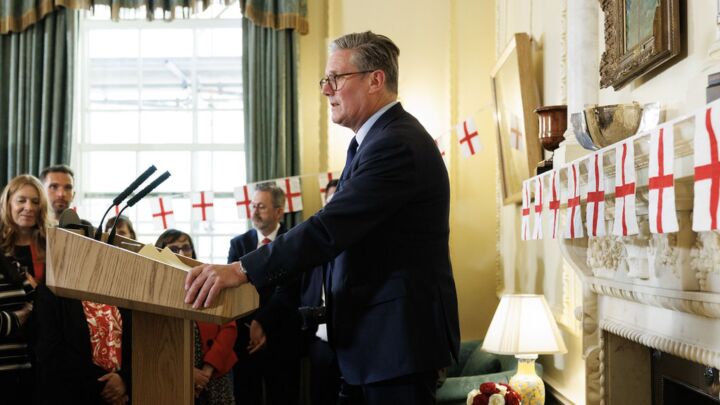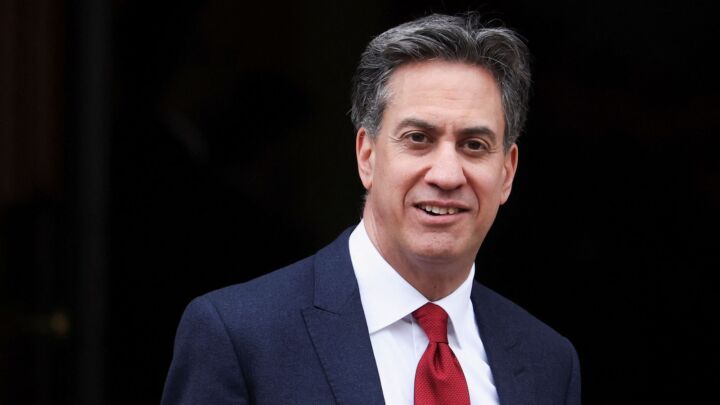Stop doctoring the statistics on abortion
Claims that gynaecologists’ moral objections are pushing ‘late’ abortions outside the NHS are greatly exaggerated.

Want to read spiked ad-free? Become a spiked supporter.
Wendy Savage of Doctors for a Woman’s Choice on Abortion argues that opportunistic anti-abortionists are misrepresenting gynaecologists’ views on women’s right to choose.
The Daily Mail on 17 May carried a frontpage banner headline: ‘NHS DOCTORS REFUSING TO CARRY OUT ABORTIONS’. The text below read: ‘NHS doctors are refusing to carry out late abortions, forcing hospitals to contract them out to private clinics and charities. Growing moral objections mean three quarters of the 7,000 terminations carried out after 17 weeks of pregnancy are outside the Health Service.’ (1)
It is true that the majority of later terminations are done outside the NHS. But this is not a new phenomenon, and the Mail is incorrect to explain it as a consequence of ‘growing moral objections’. According to my own work surveying gynaecologists’ attitudes and practices, it is not even the case that more doctors have objections to late abortions than in the past.
What has changed is the way that abortion services are organised – which means that a greater proportion of earlier abortions are carried out by abortion providers in the charitable sector, though they are funded by the NHS. Late abortions have always been confined to a minority of units in the NHS but used to be done privately, except for fetal abnormality.
This specialisation of services has improved abortion provision, but it also means that doctors in NHS hospitals are less likely to have firsthand experience of performing abortions than in the past.
No big change
In 1988, 72 per cent of abortions between 17 and 24 weeks’ gestation were done outside the NHS. When it comes to abortions at gestations of over 20 weeks, there has been no change in the proportion carried out by the NHS. In 1988, 2,703 women in England and Wales had abortions at 20 weeks or later (2). Of these, 531 (19.6 per cent) had their abortion carried out by the NHS, while 2,102 women (77.8 per cent) had to pay for their abortions privately and only 70 (2.6 per cent) took place under an agency agreement, whereby the NHS funds abortions carried out by abortion providers in the charitable sector.
In 2006, of 2,812 abortions done at 20 weeks’ gestation or later, 20 per cent (679) were done by the NHS and another 71 per cent (1,860) were done under an agency agreement. Ten per cent of women (281) had to pay to go private, which is probably about twice the proportion that would choose this option.
It is not true, then, that there is an increasing proportion of women being cared for outside the NHS. In fact, between 1988 and 2006 there was an increase of 25 per cent in the proportion of women whose abortions were funded by the NHS. This fits with a general trend for all abortions, in which the non-NHS charitable sector has almost taken over from the private sector in providing abortions – a shift in practice that is recognised to be good for women (3).
So what about the Mail’s claim that doctors have ‘growing moral objections’ to performing late abortions? It seems that this assertion does not stand up either.
Doctors and abortion rights
Nearly 20 years ago, in 1989, Colin Francome and myself carried out the first scientific study of British gynaecologists’ attitudes and practice, a survey of a random sample of 405 NHS gynaecologists drawn from the Medical Directory. We obtained a response rate of 84.6 per cent. Seventy-six per cent agreed that the 1967 Abortion Act had worked successfully. In response to the question ‘Do you think that the choice as to whether or not to continue with a pregnancy should or should not be left to a woman in consultation with her doctor?’, almost three quarters (73.4 per cent) said ‘should’.
Six doctors said they had a conscientious objection to abortion and so did not perform them, but 75 per cent of the remainder performed abortions every week. However, one fifth (21.6 per cent) only did abortions up to 12 weeks’ gestation and just over a quarter (27 per cent) had a personal limit of 16 weeks. Twenty-nine per cent would perform abortions at 20 weeks’ gestation or above (4).
The most striking finding was that the proportion of gynaecologists who thought women should have the right to have an abortion at 20 weeks’ gestation and over was almost 90 per cent, three times the proportion of gynaecologists who would personally perform an abortion at this stage.
What has changed since 1989? In 2008, Professor Francome and myself have embarked on another survey of gynaecologists, a random sample of one in six of those listed by the Royal College of Obstetricians and Gynaecologists (RCOG) as practising in NHS hospitals in Great Britain. We approached 230 gynaecologists and so far have a 60 per cent response rate, so the results should be treated with caution. However, the provisional results of the survey give some interesting insights into doctors’ views.
Supporting the 1967 Act
We worded the question about the 1967 Act slightly differently from that of 1989: ‘Do you think that on the whole the 1967 Abortion Act is working satisfactorily?’ Eighty per cent agreed with this statement, although almost a fifth mentioned that the notification system was outdated and a few commented on the postcode lottery (which means that some women are operated on in their local hospital, while others are referred to an agency and may have to travel some distance for surgery), or difficulty with access.
A small majority agreed that the 24-week limit was appropriate, and of those who suggested a lower limit when asked a supplementary question, 90 per cent agreed to 24 weeks if the woman’s health was at risk, and two thirds if she had been raped.
A modest majority of gynaecologists would like abortion separated from general gynaecology, but there has been no significant change over the past 19 years. There is more support for regional units which would allow those younger doctors who wished to be trained to obtain the necessary experience in the surgical skills required, but some pointed out that it would mean more travelling for women.
The RCOG set up a system of sub-specialisation in the early 1980s and I argued then that we should have one such area dealing with fertility control: abortion, sterilisation and contraception. Since then some community gynaecology posts have been created but they do not have the status of a sub-specialty, and it seems that half of gynaecologists accept this view now.
Table 1: Consultants’ views on organisation and status
of abortion services
What these results show is that there has not been a massive swing in gynaecologists’ attitudes to abortion, and it is quite possible that it is more the recognition that General Medical Council guidelines advise doctors not embark on procedures if they lack competence to perform them, which makes fewer of them do abortions at present compared with 20 years ago. The days of ‘see one, do one, teach one’ are over.
Opinion before evidence
The Daily Mail’s claim that doctors have ‘growing moral objections’ to performing late abortions seemed to be based not on any firm evidence, but on the views expressed by one doctor, Vincent Argent, who claimed that in one hospital where he used to work medical staff decided not to perform abortions after 14 weeks, and at another that worked to a self-imposed limit of 16 weeks. I was rather shocked by this admission. Did the hospitals inform the local GPs of this decision? Why should doctors decide to refuse a woman an operation to which she has a legal right because they don’t want to do them?
Some doctors have always refused to perform abortions after a certain gestation, which is why the NHS rates of abortion provision varies so much in different parts of the country. The idea of agency agreements arose because 20 years after the Abortion Act was passed, only 8.9 per cent of women in the West Midlands had an NHS abortion compared with 41 per cent in England and Wales as a whole. It took another 10 years before three quarters of women obtained a free abortion in England and Wales and the postcode lottery was eased by using agency agreements where NHS hospitals were unable or unwilling to provide a service.
Dr Peter Saunders from the anti-abortion Christian Medical Fellowship told the Daily Mail: ‘Few NHS hospitals now do abortions over 16 weeks… Trusts are required to consider contracting out on grounds of cost but there is no doubt that the real reason is that doctors are increasingly reluctant.’ Has Dr Saunders surveyed them? Or is he just stating his opinion based on a few conversations with like-minded doctors? In 1989, almost half of gynaecologists did not do abortions at gestations over 16 weeks and 84 per cent did not do them at over 20 weeks – which suggests that today’s attitudes have in fact not changed very much.
In our current survey, we gave three options as to what respondents might do if a woman presented at 13 weeks’ gestation or over: 1) refer as part of an agency agreement; 2) return her to her GP; or 3) perform the abortion in your own hospital. Only a third of doctors said the woman would be operated on in their own hospital, and one sixth returned the woman to the GP: which is worrying, as this would be likely to increase delays and thus the number of later operations. This is a major change from 1989, when three quarters of gynaecologists were doing operations weekly and 12 per cent fortnightly or monthly, but whether it is doctors or managers who decide to contract the abortion service out is not known.
In 1967, the late Professor McLaren of Birmingham (a founder member of the Society for the Protection of the Unborn Child), was opposed to abortion, and those trained in his unit and often then appointed as consultants in the West Midlands region were also opposed to abortion. The consultant appointments committees always have a representative from the university as well as one from the RCOG and locally, but the RCOG representative would never override the local doctors: his or her job is to check that those interviewed are properly trained, and the right to a conscientious objection to abortion has always been maintained, rightly in my view, by the RCOG.
In contrast to the West Midlands, in the northern region of England a redoubtable women gynaecologist Dorothea Kerslake was pro-choice, and the differences in NHS provision persist after 40 years (see table 2 below). A woman in London is a third more likely to have to pay privately for an operation than the average, and almost four times as likely as a woman in the north-east.
Table 2: Proportion of abortions done in the NHS, under an agency agreement or privately by Strategic Health Authority or Primary Care trust of woman’s residence (calculated from Table 10a, Abortion Statistics 2006)
The problem of training
There is also a training issue, because if all the later abortions in an area are being done by abortion providers in the charitable sector then the young doctor never gets a chance to discuss the situation with the woman or learn the necessary surgical skills. NHS gynaecologists in the north-east and the East Midlands regions are doing the majority of abortions and in Scotland there is virtually no private abortion provision, or agency agreements. About 300 women a year (two per cent) come to England from Scotland for treatment (5).
Doctors have always held a range of opinions about abortion and it took the British Medical Association two years to set up the committee to consider the question of illegal abortion, which claimed so many women’s lives. This had been agreed at the Annual Representative Meeting (ARM) in 1933 following remarks by Judge McCardie in 1931 at the Leeds Assizes, expressing concern about the number of criminal abortion cases he had to try. He said: ‘[T]he law on abortion should be substantially modified. It is out of keeping with the conditions that prevail in the world about us.’
The BMA’s committee reported in 1936: ‘While the Committee has no doubt that legalisation of abortion for social and economic reasons would go far to solve the problem of the secret operation, it realises that this is a matter for consideration by the community as a whole and not by the medical profession alone.’
The ARM did not receive the findings positively, but despite attempts to suppress the report it was agreed to publish it by 98 votes to 67. Public pressure led to the setting up of a committee under Lord Birkett in 1937. The Birkett Committee concluded that there were 100,000 illegal abortions every year and the law should be amended to make it clear that a doctor acting in good faith could carry out an abortion on certain grounds. Dorothy Thurtle put in a minority report as many estimated that the number of illegal abortions was 150,000 and that more than 40 per cent were criminally induced (6). The Second World War intervened, so no action was taken following the report.
Thirty years later, however, the 1967 Abortion Act was passed – and 40 years after that, the anti-abortion lobby is still making untrue statements about the provision of abortion services and the medical literature. Those of us who want to see abortion provision improved need to interrogate the claims made by supporters of the anti-abortion lobby, and start work to attain the ultimate goal of decriminalisation of abortion so that the woman really does have the choice to make her own decision in a supportive environment.
Wendy Savage is coordinator of Doctors for a Woman’s Choice on Abortion. She is a distinguished gynaecologist and champion of women’s rights in childbirth and fertility.
Jennie Bristow offered 24 reasons for keeping the upper limit at 24 weeks. Elsewhere, she restated the moral case for women’s right to choose. Anne Furedi urged officials to stop playing politics with abortion. Stuart Derbyshire queried the quality of the debate on abortion offered by Channel 4’s Dispatches. Ellie Lee took a look at the history of the abortion debate and made the case for Early Medical Abortion (EMA). Or read more at spiked issues Abortion and NHS.
(1) Now NHS doctors refuse to carry out late abortions on moral grounds, Daily Mail, 17 May 2008
(2) ‘Abortion Statistics’, Office of Population Censuses and Surveys (OPCS), 1988 Series AB no 15, London HMSO
(3) ‘Statistical Bulletin: Abortion Statistics England and Wales 2006’, Department of Health, 2007
(4) ‘Gynaecologists’ attitudes to abortion’, W Savage and C Francome, The Lancet ii: 1323:4, 1989; ‘Gynaecologists abortion practice’, W Savage and C Francome, British Journal of Obstetrics and Gynaecology 99: 153-7, 1992
(5) Scottish Health Statistics Information Service, NHS National Services Scotland, ISD Scotland, 2007
(6) Abortion law reformed, M Simms and K Hindell, Peter Owen (London), 1971
Who funds spiked? You do
We are funded by you. And in this era of cancel culture and advertiser boycotts, we rely on your donations more than ever. Seventy per cent of our revenue comes from our readers’ donations – the vast majority giving just £5 per month. If you make a regular donation – of £5 a month or £50 a year – you can become a and enjoy:
–Ad-free reading
–Exclusive events
–Access to our comments section
It’s the best way to keep spiked going – and growing. Thank you!







Comments
Want to join the conversation?
Only spiked supporters and patrons, who donate regularly to us, can comment on our articles.